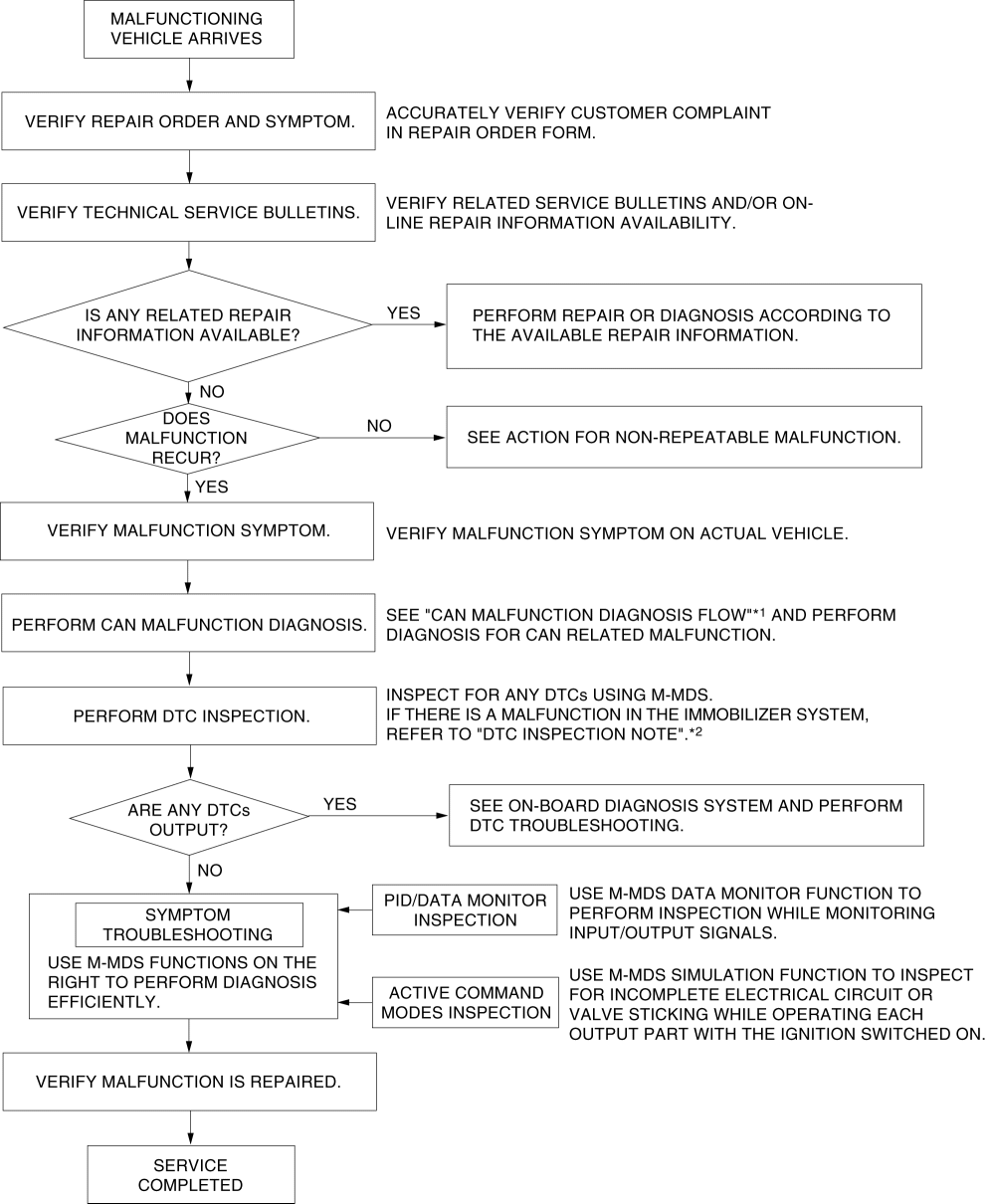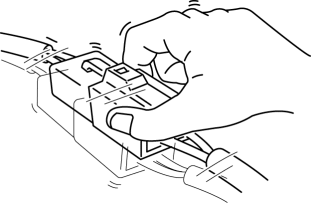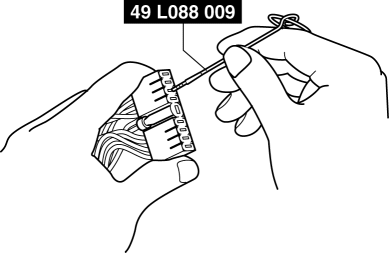FOREWORD [START STOP UNIT]
If there is any vehicle malfunction complaint lodged by a customer, perform malfunction diagnosis according to the troubleshooting procedure. (See Troubleshooting Procedure.)
NOTE:
If any of the following items are touching or near the remote transmitter, signal communication between the remote transmitter and the vehicle is negatively affected, resulting in the engine not starting.
Spare keys
Keys for other vehicles equipped with an immobilizer system
Any metallic object
Any electronic device, or any credit or other card with magnetic strips
Radio wave outputting device nearby
Troubleshooting Procedure
- *1
- (See CONTROLLER AREA NETWORK (CAN) MALFUNCTION DIAGNOSIS FLOW.)
- *2
- (See DTC Inspection Note.)
Action for Non-repeatable Malfunction
If the malfunction does not recur, verify the malfunction cause by performing the following actions:
Verify that a DTC has been recorded in the memory. (See DTC INSPECTION [START STOP UNIT].)
Based on the repair order form, attempt to drive the vehicle or perform tests to replicate the malfunction, record the data at that time, and detect the malfunction cause.
Shake the wiring harness or connector of the electrical component which is suspected to be the cause of the malfunction, and inspect for malfunction or occurrence of any DTCs.
Inspect the female terminals on the connector of the electric component which is suspected to be the cause of the malfunction for poor connection.
DTC Inspection Note
< Previous Next >
When there is a malfunction in the immobilizer system, DTCs are recorded in the start stop unit and PCM.
The DTCs stored in the start stop unit can be verified using the flashing pattern of the security indicator light and M-MDS.
If immobilizer system related DTCs are not recorded even if the engine cannot be started, perform symptom troubleshooting. (See NO.3 WILL NOT CRANK [SKYACTIV-G 2.0].)


